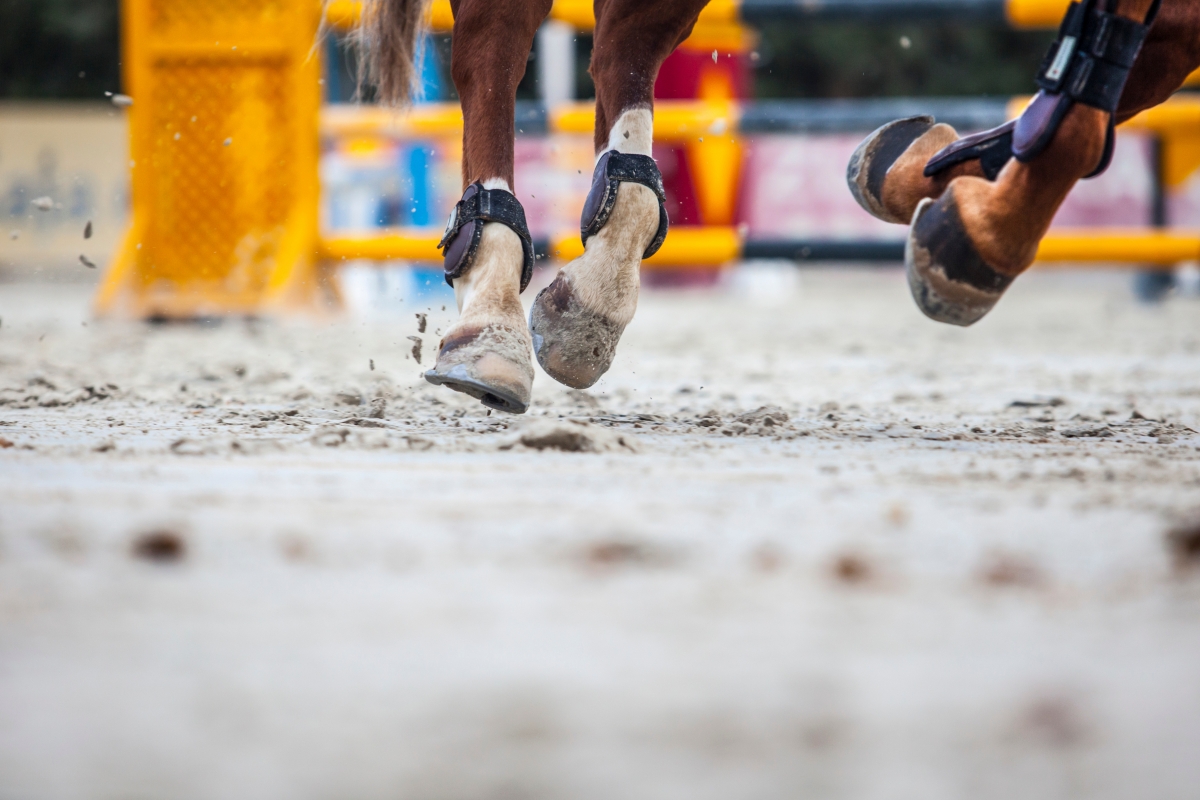
Ha naponta vagy lovak és lovasok közelében, biztosan hallottál már a ízületgyulladásról (osteoarthritis). Olvasd el a cikket, ha szeretnéd rendszerezni tudásodat, illetve megérteni, mi az a ízületgyulladás, hogyan lehet felismerni, és hogyan lehet segíteni egy lónak, akinél ezt diagnosztizálták.
A ízületgyulladás komoly probléma - kizárhatja lovunkat a munkából, és főleg fájdalmat okoz neki, ezért érdemes tudni, hogy mik ennek a betegségnek az okai, illetőleg hogyan lehet segíteni egy ízületi gyulladással diagnosztizált lovon.
Ízületi gyulladás lovaknál – milyen betegség is ez?
Az ízületgyulladás a ló egyik vagy mindkét hátsó lábának tarsalis ízületének degeneratív betegsége. Más nevek (elhasználódott ízület) kaptásság vagy egyszerűen a ló ízületi gyulladása. Ez a betegség a hátsó lábak sántaságának leggyakoribb oka.
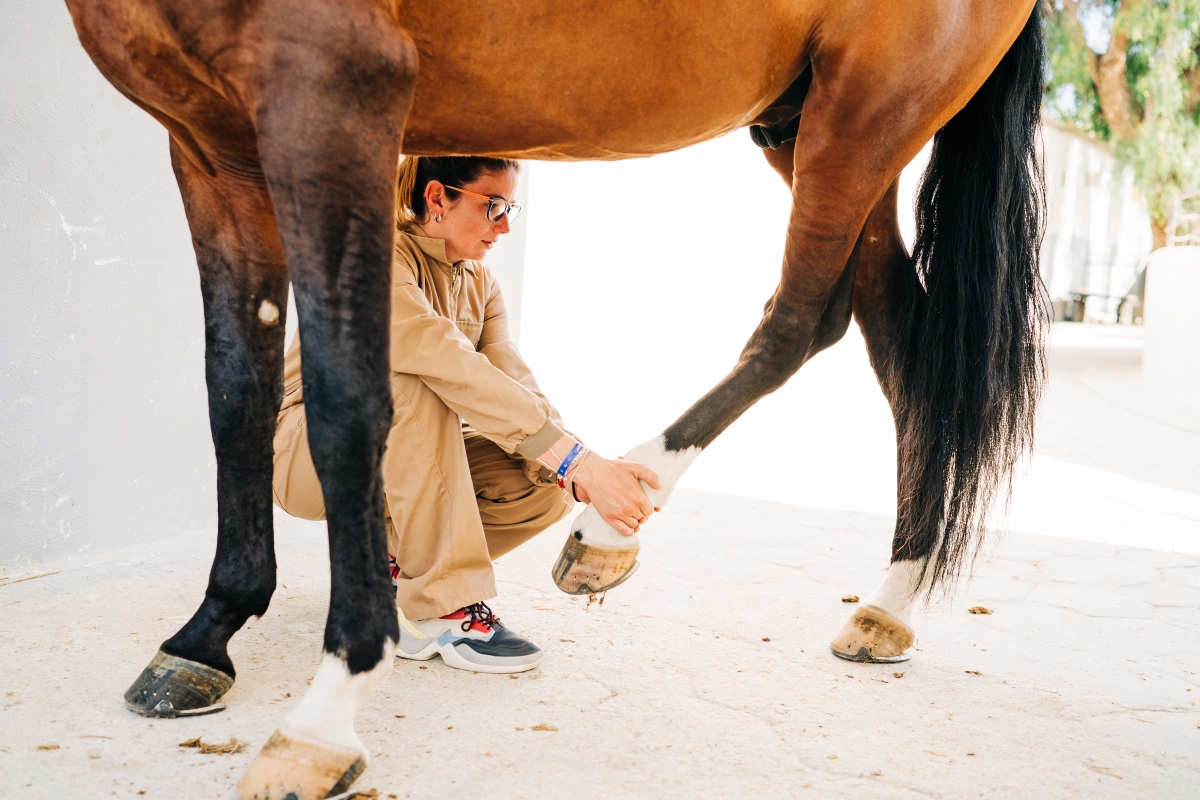
A ló tarsus ízülete négy részből áll, amelyek közül három mozgáskorlátozott. Az ízületgyulladás egy degeneráció, amely a ló lábának ezen a részén fordul elő, és a ló ízületének gyulladásának eredménye. A gyulladás elváltozásokat okoz, aminek következtében az ízületen belül csontos kinövések képződnek. Ezek pedig az ízület deformálódásához valamint a végtag csontjainak összeolvadásához vezethetnek, illetve károsíthatják a lovak ízületi porcát, ami az ízület immobilizációjához vezet.
Ez a betegség bármely lovat érinthet, de leggyakrabban felnőtt és idősebb, leginkább a 8 évesnél idősebb lovakat érint.
Ízületgyulladás – okok
A ló ízületgyulladásának okai eltérőek lehetnek, és nem teljesen egyértelműek. Az állatorvosok illetve a tenyésztők a következő tényezőkre hívják fel a figyelmet a betegség lehetséges okaiként:
- túlerőltetés okozta károsodás, különösen fiatal korban
- a csüdízület és a csonthártya gyulladása
- a végtag mechanikai sérülései (pl. rúgás, baleset következtében)
- a hátsó végtagok rendellenes anatómiája
- a ló helytelen patkolása
- helytelen táplálkozás
Nem biztos, hogy az ízületgyulladás örökletes-e, de a hajlamok (pl. a lábak szerkezete, amely hajlamosítja a lovakat az ízületgyulladásra) genetikailag átadhatók.
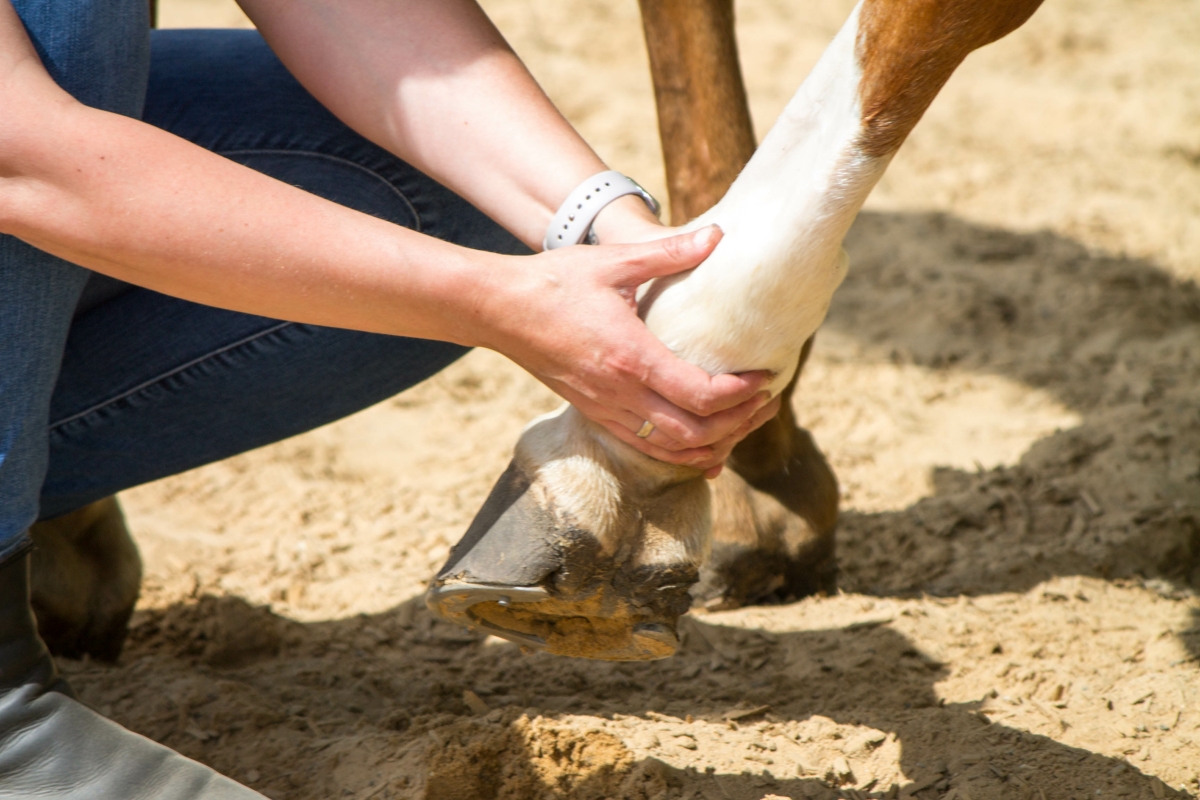
Hogyan ismerjük fel az ízületgyulladást a lovaknál? Tünetek.
Az ízületgyulladás első tünetei a hátsó láb sántasága, vagy torzulása vagy megrövidült lépéshosszúsága. A sántaság leggyakrabban akkor nyilvánul meg, amikor a ló egy pihenőidő után (pl. lovaglás elején) mozogni kezd. Amikor az állat mozgásban van, javulás tapasztalható, de a probléma hosszan tartó munka után visszatér.
Az ízületgyulladás sok fájdalmat okoz, ezért a lovak sajátos módon helyezik el a lábukat, ami miatt a pata elülső része gyorsabban kopik. A betegség későbbi szakaszában csontos megvastagodás jelentkezhet az ízületen.
A vizsgálat, amely segít meghatározni, hogy a lónak ízületgyulladása van, az, hogy a ló végtagját körülbelül egy percig hajlítsa be a hasa alá. Ezután leengedjük a lábszárat, és ügetésre biztatjuk a lovat, lehetőleg kemény talajon. A sántaság megjelenése ízületgyulladásra utalhat, de a vizsgálat nem zárja ki a többi ízület (térd és csípő) megbetegedését sem, amelyek szintén meg vannak hajlítva a vizsgálat során.
Érdekesség: az ízületgyulladás tüneteit a "Dzwonek" című folyóirat 1862-ből (!) írta le:
„Ahhoz, hogy megkülönböztesd az ízületgyulladás okozta sántaságot a másiktól, figyelned kell a ló járását. Ugyanis amikor a ló húzza a lábát a földön, és néhány lépéssel többet sántít, és megint néhány lépéssel kevesebbet, az már bizonyíték arra, hogy a ló ízületgyulladásban szenved. Amikor áll, soha nem támaszkodik teljesen az érintett lábra, hanem csak megemeli, és a pata hegyét enyhén megtámasztja a talajon”.
Szerencsére ma már fejlettebb diagnosztikai módszerekkel rendelkezünk, azonban a gondos és ügyes megfigyelés továbbra is nagyon értékes. A sántaság előfordulása nem feltétlenül jelent ízületgyulladást, de mindig vészjelzésnek kell lennie, amely arra készteti a ló tulajdonosát, hogy keresse ennek az állapotnak az okát.
Az ízületgyulladást diagnosztizáló vizsgálatok
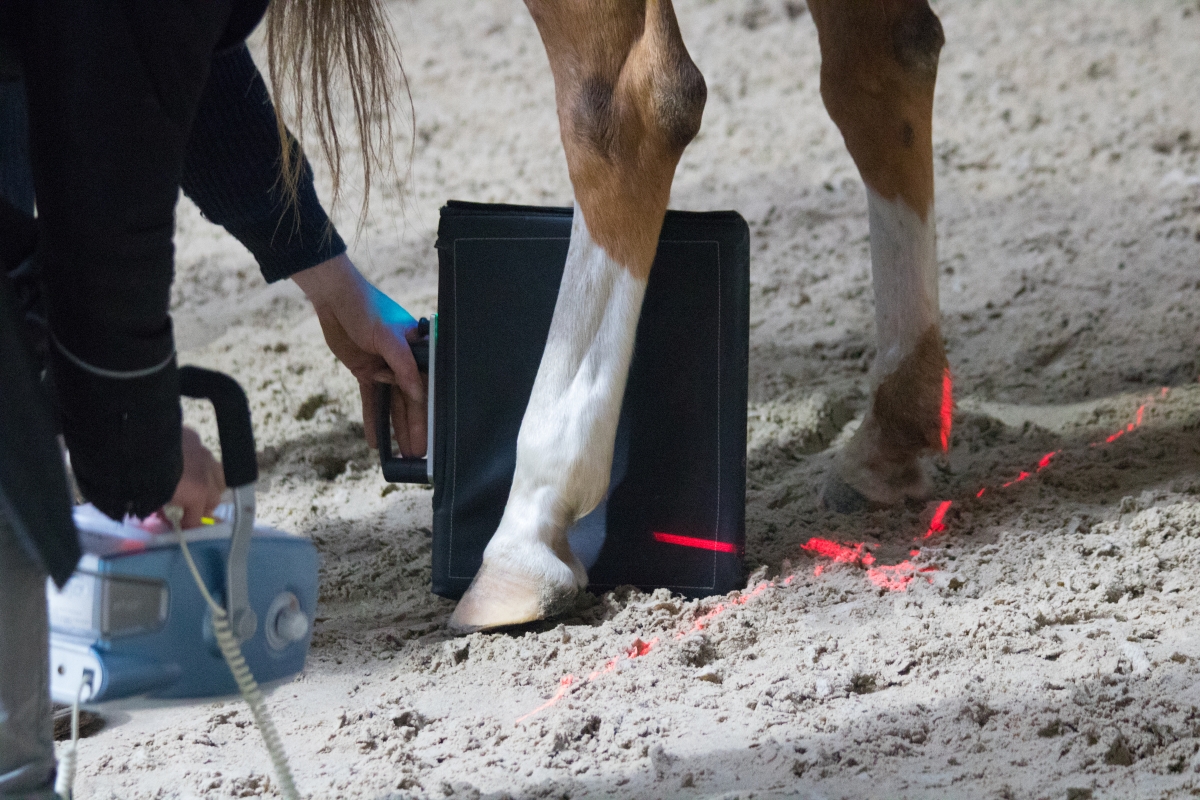
Röntgenfelvételek készítésével lehet ellenőrizni, hogy a lóban van-e ízületgyulladás, amely rendellenesség észlelése esetén azonnal megmutatja annak méretét és fejlettségi fokát. Fontos azonban emlékezni arra, hogy az ízületgyulladás korai szakaszában nem feltétlenül jelenik meg a röntgenfelvételeken. A betegség kimutatására diagnosztikai érzéstelenítést is alkalmaznak.
A legmegbízhatóbb diagnosztikai módszer a szcintigráfia. Ez egy drága teszt, amely a keringési rendszer által elosztott készítmény beadásából áll. Ennek eredményeként gyulladások, még kisebbek is, láthatók a képen.
Ízületgyulladás a lovakban – kezelés
Az ízületgyulladásos lovak prognózisát illetően óvatosnak kell lenni, azonban az ízületgyulladás nem egy végeles ítélet. A kezelés elsősorban a gyulladástól való megszabadulásról illetve az állat által tapasztalt fájdalom csökkentéséről szól. A kezelési módszereket a betegség súlyosságától és a ló használatának módjától, valamint általános egészségi állapotától függően választják ki. Az elérhető kezelések a következők:
- ortopédiai patkó, amely leveszi a terhet a degenerált ízületről
- gyulladáscsökkentő és fájdalomcsillapítók
- injekció beadása az ízületbe – például hialuronsavas injekciók. Légy óvatos a szteroid injekciókkal, amelyek tönkretehetik az ízületi porcot
- ló gyógytornász szolgáltatásainak igénybevétele (lézeres kezelések, ultrahangok, magnetoterápia)
- lökéshullám terápia
- műtéti beavatkozás (arthrodesis, az ízületgyulladásos ín átvágása, szélsőséges esetben - idegek levágása, ún. denerváció).
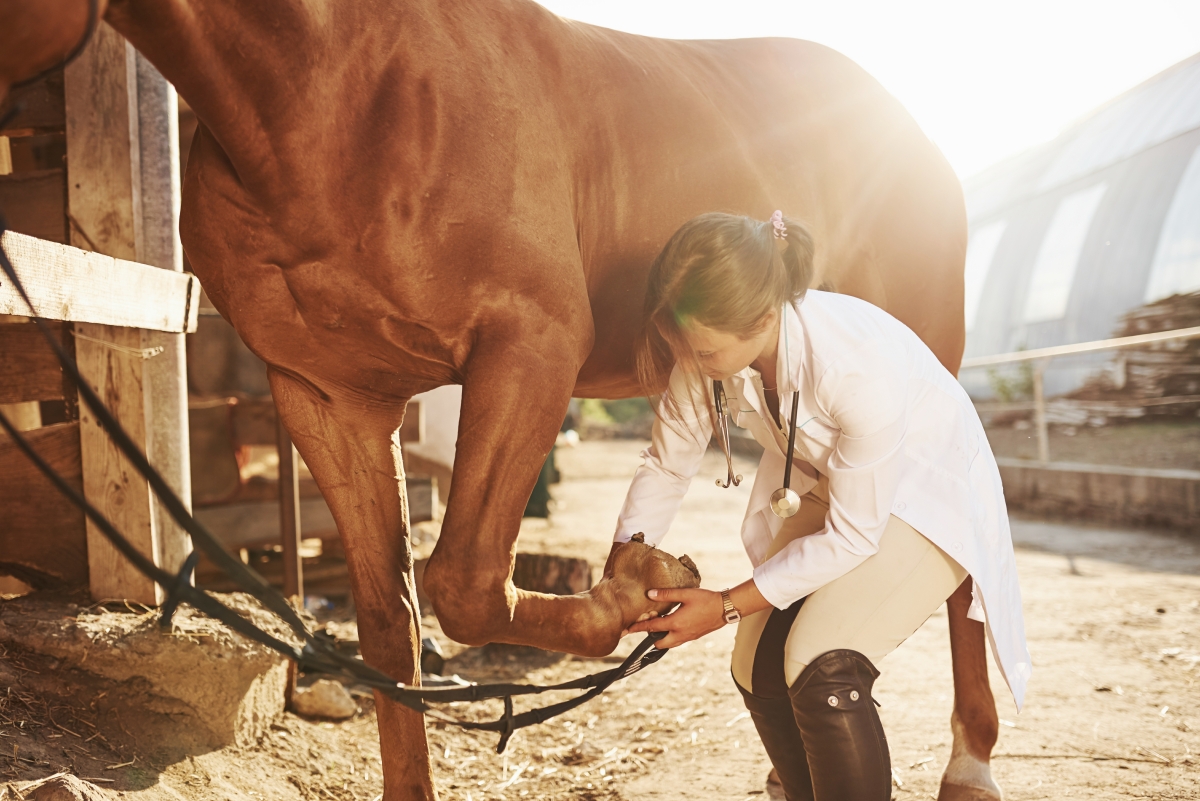
Bizonyos esetekben a lónak használaton kívül kell lennie, de vannak olyan helyzetek, amikor jó ha a ló rendszeresen edz, és néha kell is, hogy a probléma ne súlyosbodjon. A döntés az állatorvosé, aki az adott lovat kezeli.
A cikk tájékoztató jellegű. Az interneten szerzett ismeretek nem helyettesítik az állatorvos diagnózisát.
Ha olyan ápolószert keresel, ami segít a Lovad gondozásában, kattints ide és tekintsd meg az Equishop Lovasbolt széles kínálatát.
Kérdéseid vannak? Ne felejtsd el, hogy az Equishop Team az Te rendelkezésére áll.
E-mail: kapcsolat@equishop.com
Hírek az Equishop Lovasboltból:










